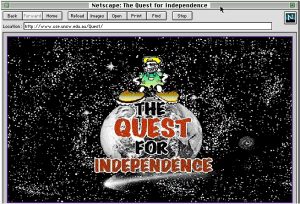In honor of the colleague, mentor, and friend that brought us together, every year the Internet Time Alliance presents the Jay Cross Memorial Award. The award is for an individual who represents the spirit of continuing informal learning for the workplace. This year, Mark Britz is the deserving recipient.
Jay was a fierce champion of social and informal learning. He saw that most of how we learn to do what we do comes from interacting with others. As a response to his untimely passing, the remaining members of the ITA decided to honor his memory with an award. Jane Hart, Harold Jarche, Charles Jennings, & myself each year collectively decide an individual who we think best reflects Jay’s vision. And we announce the recipient on the 5th of July, Jay’s birthday.
Mark has resonated and amplified the message of ongoing learning since we first crossed paths. He has interacted with the ITA members regularly via tweets, blogs, and in person when possible. And we’ve appreciated his engagement with the ideas and his contributions to our thinking.
I got to know Mark’s thinking a bit better when he wrote a case study based upon his work at Systems Made Simple for the Revolution book (Jay wrote the foreword). And he’s continued to blog about workplace learning at The Simple Shift with short but insightful posts. Currently part of the team running events for the eLearning Guild, Mark manages to consistently touts views that illuminate thinking about the new workplace.
The situation he cites in that case study is exemplary of this type of thinking. Charged with starting a corporate ‘university’ in an organization that was composed of many experts, he knew that ‘courses’ weren’t going to be a viable approach. Instead, he championed and built a social network that pulled these experts together to share voices. The core L&D role was one of facilitating communication and collaboration, rather than presenting information.
For his continuing work promoting communication, collaboration, and continual learning, we recognize Mark’s efforts with the 2018 Internet Time Alliance Jay Cross Memorial Award.




